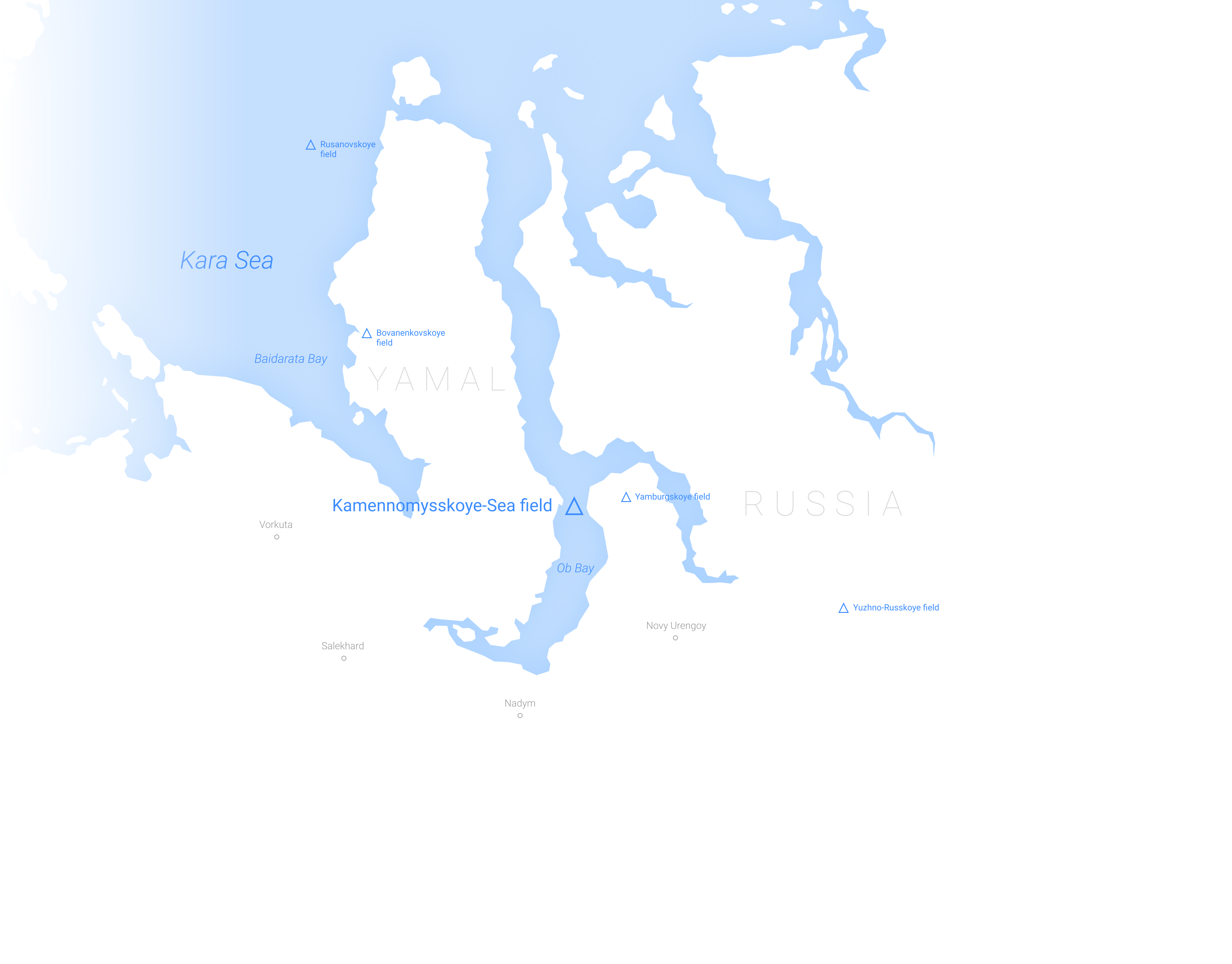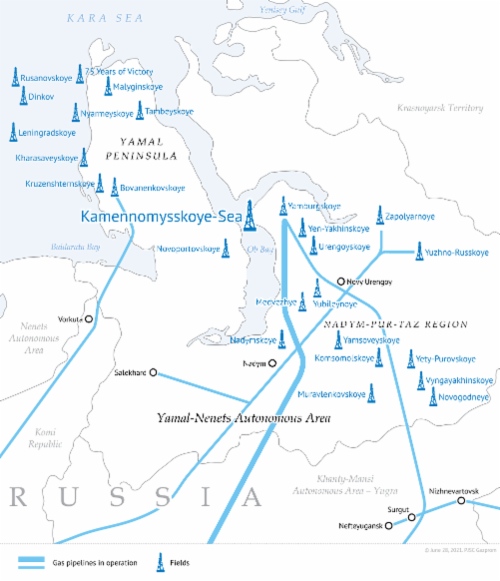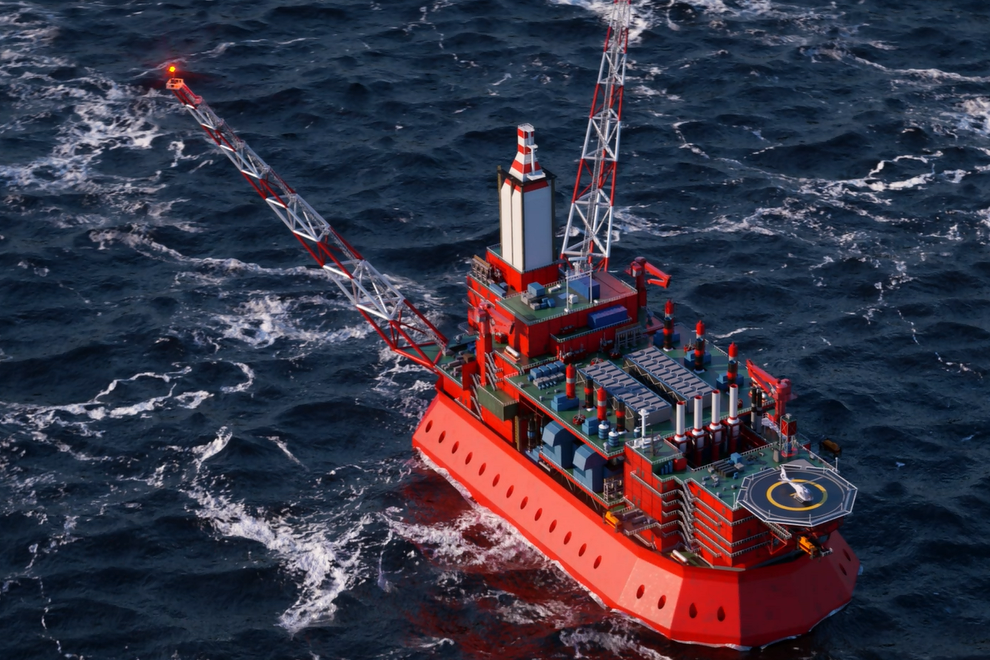The Russian continental shelf is a strategic region for Gazprom.

gas reserves
gas reserves
Figures and facts
The Kamennomysskoye-Sea field is located in the Ob Bay of the Kara Sea.
The field is unique in terms of its gas reserves, which amount to some 555 billion cubic meters (C1+C2 categories).
The design production capacity of the field's Cenomanian deposits is 15 billion cubic meters per year.
The field is situated in a marine environment characterized by extreme conditions: low temperatures (up to minus 60 degrees Celsius), heavy storms, shallow depths (5–12 meters), and thick and dense freshwater ice.
Project implementation
The field development project has an offshore part and an onshore part. The key facility in offshore development will be a special ice-resistant platform, the construction of which started in June 2020. It is planned to tow the platform to the field in the summer navigation period of 2024 and to commence gas production in 2025.
The platform will be used to build 33 main directional production wells. Later on, another 22 wells for maintaining production rates will be placed on satellite ice-resistant conductor platforms that do not require permanent presence of personnel.
The extracted gas will be fed into pipelines and arrive onshore into a comprehensive gas treatment unit and a booster compressor station. After that, the gas will go into Russia's Unified Gas Supply System.
Technologies
The ice-resistant platform (ICP) will be more than 135 meters long, 69 meters wide, 41 meters tall from the base to the helicopter pad, and its weight will exceed 40,000 tons in total. The structures placed on the ICP will include, inter alia, main and auxiliary drilling modules, operational and energy complexes, and living quarters for 120 people.
The full scope of modeling and design for the ICP was performed by Russia's leading shipbuilding research institutions taking into account the extreme ice and climate conditions in which gas will be extracted.
The construction process will involve a number of cutting-edge technical solutions to ensure a high level of industrial and environmental safety, as well as operational integrity of the facility. For instance, to protect the ICP from thick ice, the support structure will be V-shaped, and nearly all of the facility's equipment will be encased in the hull and thus protected from cold and wind. The ICP will be firmly fixed on the muddy bottom of Ob Bay with the help of a piled gravity base foundation: the platform will be placed on the seabed, the underwater part of the ICP will be filled with seawater and then fixed in place with 56 piles more than 2 meters in diameter, driven 47 meters into the seabed.
In order to build a facility of this technological complexity, several Russian shipbuilding and machine-building centers are providing their capacities according to the 'distributed shipyard' principle. Separate components of the platform will be simultaneously put together in Astrakhan, Kaliningrad, Severodvinsk, Yekaterinburg, and Rybinsk. The ICP will be finally assembled in one piece in Kaliningrad. It will then be towed to the field, after which flare booms and a helicopter pad will be set up at the facility. Construction operations will involve about 7,000 Russian workers and specialists.
Environment
Particular attention in the ICP construction project is paid to solutions aiming to prevent adverse impacts on the Arctic flora and fauna. This includes a zero discharge system: all domestic and production waste will be removed to the shore and disposed of later.




